We hope that each of you, our readers, will enjoy and appreciate this article we present about these 5 Fascinating Fauna of Argentina. It was certainly our pleasure to gather the information for you. May it provide you with both education and increased awareness.
Certainly, these few species listed herein represent only a portion of the similar marvels found in this area. It’s our belief, though, that they serve as excellent representations of the wonders that exist. Check out some of our other articles for similar marvels.
Jaguarundi
Jaguarundi Facts
- Starting off this article about these 5 Fascinating Fauna of Argentina we present the first of two wild felines on the list, the amazing Jaguarundi.
- The simple term given it actually serves as the attention-grabbing common name for a truly remarkable species of wild cat. The scientific name of the mammal, however, remains that of the difficult to pronounce Herpailurus yagouaroundi.
- By either name, it represents an animal that, sadly, now only shows scattered population groupings. Thus, it remains vulnerable for several reasons. Officials generally fear that these pockets of habitation, unfortunately, seem to be dying out.
- As a result, the Jaguarundi now represents a protected species throughout the majority of its native range. But, hunting does not pose its greatest threat. Loss of much of its traditional habitat serves as the principal threat to the existence of this mammal.
- In addition, the Amazon Basin currently forms the only region of its range in which the numbers of the awesome Jaguarundi appear to be stable. Despite its somewhat uncertain situation, however, the IUCN currently lists the mammal as Least Concern.
- This surprising status appears on the organization’s Red List of Threatened Species. Nonetheless, many people currently believe it to be threatened. Most likely, at the present time, its greatest threats come from habitat loss and climate change.
Jaguarundi Physical Description
Rather impressively, mature adult specimens of the Jaguarundi averages roughly 30 in (77 cm) in body length. The tail of the feline also reaches a relatively great length of about 24 in (60 cm) in length. Mature adults sometimes weigh as much as 20 lb (9.1 kg).
This amazing species displays no noticeable degree of the physiological trait of sexual dimorphism. This extends to both appearance and physical size. Yet the wild feline does display one unique trait. This holds true due to the fact that it has a unique coloring.
That’s because the fur of different individuals sometimes appears as either a dark chestnut or brownish-black in color. But, quite surprisingly, there seems to be no genetic tendency for this, since individuals of either or both patterns may be born in the same litter.
The amazing Jaguarundi remains known among those who appreciate the wild cats for yet another physical trait. That’s due to its distinctively short legs. In sharp contrast to this characteristic, the body of the remarkable mammal develops as quite elongated.
- Kingdom: Animalia
- Phylum: Chordata
- Class: Mammalia
- Order: Carnivora
- Family: Felidae
- Genus: Herpailurus
- Species: H. yagouaroundi
Jaguarundi Distribution, Habitat, and Ecology
To the surprise of some people, the amazing Jaguarundi represents a small species of wildcat primarily endemic to a moderately broad section of the world. More precisely, this mainly consists of specific regions of South America and Central America.
Scattered small populations of this animal nevertheless also exist as far north as the states of Texas and Florida, in North America. Wherever individuals appear, however, this incredible wild feline exhibits very specific requirements for its choice of habitat.
This holds true since most individuals prefer to inhabit low-lying areas of the brush. But, these must also be in close proximity to streams or small rivers. Although this limits its areas of habitation, it does include habitats ranging from wet grasslands to dry forests.
Human encroachment forced the Jaguarundi to adapt, however. Some also live in dense tropical regions, and at altitudes as high as 10,500 ft (3,200 m). Despite the intense activity, some have even been spotted in the vicinity of the Guiana Space Center, in French Guiana.
Black-and-white hawk-eagle
Black-and-white hawk-eagle Facts
- Next up in this compilation of 5 Fascinating Fauna of Argentina is the astonishing raptor that goes by the title of the Black-and-white hawk-eagle.
- The distinctive name given to this work of evolution serves as the common name of a visually remarkable avian species. This magnificent bird also bears the somewhat cumbersome scientific name of the Spizaetus melanoleucus, however.
- The noted French ornithologist Louis Jean Pierre Vieillot holds the distinction of many firsts. Among these is the fact that he represented the first scientist to officially describe the species. This fortuitous action further occurred in the year 1816.
- Unfortunately, despite its numbers and range, a sad fact remains. In point of fact, researchers still know very little about certain aspects of the life of this bird. This lack of information holds especially true in regards to its breeding habits.
- The visually striking creature also represents a source of some confusion in scientific circles. This holds true due to a most uncommon set of circumstances. That consists of the fact that it has been moved from one genus to another several times.
- For the moment, the IUCN lists the Black-and-white hawk-eagle as Least Concern. This listing appears in its Red List of Threatened Species. That status, though, could easily change in the near future, as conditions appear to be changing rapidly.
- For one thing, its population numbers currently appear to be diminishing. This situation also lamentably extends throughout the entirety its natural range. Not surprisingly, the effects of ongoing climate change likely form its greatest threat.
Black-and-white hawk-eagle Physical Description
The gorgeous Black-and-white hawk-eagle merits attention for more than just its size. In point of fact, the bird ranks as an average-sized raptor. Like many related species, this animal displays a moderate degree of the physiological trait of sexual dimorphism.
In the case of this particular creature, this characteristic manifests itself in the fact that some females attain a slightly larger average weight. The species as a whole develops respectable measurements. Adults reach an average body length of about 20 – 24 in (50 – 60 cm).
A typical wingspan for both genders, furthermore, equates to roughly 46 in (117 cm). Weight, though, remains where the genders differ slightly, overall averages remain approximately equal. To be precise, a typical weight equals roughly 1.88 lb (0.85 kg).
In terms of appearance, however, no gender-based differences appear. In point of fact, both sexes of the remarkable Black-and-white hawk-eagle remain virtually indistinguishable. As the common name suggests, the basic color scheme appears as black and white.
This pattern of colors, meanwhile, generally presents itself with the body, neck, and head being white in color. The wings of the magnificent bird display a dark black, along with a lone black spot on the top of the head. But the tail shows brown with dark gray.
- Kingdom: Animalia
- Phylum: Chordata
- Class: Aves
- Order: Accipitriformes
- Family: Accipitridae
- Genus: Spizaetus
- Species: S. melanoleucus
Black-and-white hawk-eagle Distribution, Habitat, and Ecology
Despite not being widely known, the sincerely extraordinary Black-and-white hawk-eagle inhabits a fairly broad swathe of the world. That holds true due to the fact that the remarkable animal inhabits portions of both North America and South America.
Impressively, that native territory does not simply entail minor regions of the two continents. More precisely, the fascinating bird appears as far north as southern Mexico. However, its known endemic range also extends as far south as the country of Argentina.
Within this wide range, though, it possesses highly specific requirements. That holds true since it only inhabits specific habitat types. These consist of lowland forests of any type. While it does inhabit highly humid and dense forests if it must, these are not preferred.
The physically impressive bird has even more decidedly precise preferences for where it makes its home. It only inhabits such regions that appear at lower altitudes, unless forced to relocate there. This marvel of Nature also prefers regions with close-packed canopies.
Like other raptors, the stunning Black-and-white hawk-eagle evolved to feed exclusively as a carnivore. Although it hunts opportunistically, it does, like most animals, have preferred prey. These primarily consist of various toads, small mammals, and lizards.
One more unusual factor about its nature remains, though. To the surprise of many researchers, a large percentage of its diet also consists of various types of small birds. Although certain animals prey on its young in the nest, adults have few natural predators.
Southern Darwin’s Frog
Southern Darwin’s Frog Facts
- Our next choice for inclusion in this gathering of 5 Fascinating Fauna of Argentina bears the distintive title of Southern Darwin’s Frog.
- This remarkable wonder of Nature and evolution most frequently goes by the common name partly due to its range. It also holds that particular moniker for interesting reasons. For the moment, though, it has no other widely accepted name.
- Among scientists, however, it’s better known by another title. That’s the formal, technical name for the amazing species. Like many creatures known to science, though, that’s somewhat hard to pronounce. It holds the formal name of Rhinoderma darwinii.
- It received that tongue-twisting name due to a combination of efforts. The highly esteemed English naturalist, Charles Darwin, discovered it in 1841. French zoologist, André Marie Constant Duméril and his assistant, Gabriel Bibron named it, though.
- Regardless of which term one chooses to use, it’s an intriguing animal. It evolved a trait that possibly makes it utterly unique. A genetic cousin shared the trait, but’s believed extinct. Males of the species carry the tadpoles within the vocal sac, under their throat!
- Sadly, though, the population base of the remarkable Southern Darwin’s Frog is now declining rapidly. This unfortunate situation also seems to hold true throughout the entirety of its known range. The IUCN, therefore, now lists the animal as Endangered.
- The distinctive fauna faces numerous threats to its continued existence. Many of these stem directly from the actions of man. Habitat loss and degradation due to human expansion currently endanger it. It also faces the danger of ongoing climate change.
Southern Darwin’s Frog Physical Description
The stunning Southern Darwin’s Frog fascinates those who encounter it. The animal does so, however, for reasons beyond its unique pattern of brooding behavior. That’s true since this marvel of Nature intrigues one due to its sheer physical appearance, as well.
Like many of its relatives, it also displays a moderate degree of sexual dimorphism. In its specific case, this physiological trait manifests itself in terms of appearance, rather than simple size. Individuals of both genders attain roughly the same physical measurements.
Despite its other unique attributes, it remains a small variety of frog. Specimens of both sexes reach an average body length ranging from only 0.9 – 1.2 in (2.2 – 3.1 cm). This includes the snout, which also has an unusual feature. It’s elongated into a fleshy proboscis.
Compared to similar creatures, its legs evolved as comparatively slender and long. Among the studied examples, its front feet display no sign of webbing. Yet, most individuals of the species possess this structure on a few of the toes on both their small hind feet.
The genders of the Southern Darwin’s Frog distinguish themselves in coloring, however. Females typically present either a brown or green underside. Some of those showing the brown shade also present other patterns. These include faint V-shaped marks on the back.
Males, meanwhile, vary far more in coloration. These often present mostly or entirely as green on the upperside. The throat, in contrast, commonly shows a brownish hue. Much of the underside manifests as black, with large white spots in completely random patterns.
- Kingdom: Animalia
- Phylum: Chordata
- Class: Amphibia
- Order: Anura
- Family: Rhinodermatidae
- Genus: Rhinoderma
- Species: R. darwinii
Southern Darwin’s Frog Distribution, Habitat, and Ecology
The fabulous Southern Darwin’s Frog evolved as endemic to a small portion of the world. That region’s also already renowned for its abundance of natural wonders. That’s because this marvel of evolution developed in the area that’s now the continent of South America.
Even there, though, it only appears in a small swathe of the continent. All known sightings of this rare amphibian occurred in the countries of Argentina and Chile. For the moment, no evidence of the unique creature ever appearing outside of that small range exists.
It also displays preferences in its choice of habitat. The vast majority of known individuals live within the boundaries of the Valdivian Temperate Rain Forest. It most often inhabits forested areas and glades. It lives at altitudes up to 3,600 ft (1,100 m) above sea level.
Most frequently it makes its home in a variety of ecosystems. These usually include coarse woody debris, mossy areas, and grasslands. The presence of bushes and small trees appears to augment its survivability. Slow moving streams and bogs also seem to be a favorite.
Intriguingly, the Southern Darwin’s Frog developed a widely varied diet. Due to this, it feeds on a range of small local invertebrate species. Its native habitat provides it with an abundance of prey. Like many related animals, it primarily feeds as an ambush predator.
Subsequent to mating, the females typically lay anywhere from 4 – 10 eggs. Exceptional broods, though, may total as many as 40. Males can usually only brood 5 – 8 tadpoles at a time, however. An average lifespan for this impressive species seems to be 10 – 15 years.
Margay
Margay Facts
- The next creature making its presence known in this compendium of 5 Fascinating Fauna of Argentina is the second wild feline, the Margay.
- Perhaps most notably, the short term currently serves as the generally accepted common name of a truly stunning species of wildcat. The magnificent feline also goes by the hard to pronounce scientific name of the Leopardus wiedii, however.
- Regardless of the name one uses to refer to it, though, the creature remains an impressive animal, for many reasons. To begin with, this remarkable feline also remains a predominantly nocturnal animal within most of its territory.
- The species also typically prefers to spend the majority of its time in extremely remote sections within its native range. As a result this stunning marvel of Nature remains rarely seen by casual visitors to the region in which it appears.
- Currently, the IUCN lists the marvelous Margay as Near Threatened. Sadly, this unfortunate evaluation of its situation holds true throughout the entirety of its natural range. This status is reflected on the organization’s Red List of Threatened Species.
- The highly lamentable situation the beautiful small wildcat finds itself in further occurs due to a combination of several factors. Firstly, in some regions, people still slaughter an average of 14,000 of these beautiful wildcats annually for the fur.
- Quite understandably, this regrettable action has resulted in an extreme decrease in its population base. Secondly, the twin perils of habitat loss and climate change continue to present extreme challenges to the reclusive small mammal.
Margay Physical Description
Although it certainly qualifies as an impressive animal, the amazing Margay does not attain this status due to physical size. That’s because the feline only attains a small size in terms of sheer mass. In fact, it reaches a maximum known weight of as much as 8.8 lb (4 kg).
The body length of mature adult specimens further averages about 31 in (79 cm). The tail, meanwhile, somewhat surprisingly grows to a length equal to a significant percentage of the length of the body. This generally measures 20 in (51 cm) in length.
Its fur also displays a distinctive pattern. This consists of a light brown that appears splotched with dark brown or black blotches and streaks. In the meantime, the stomach of this creature generally displays an off-white, and the tail has multiple bands, with a black tip.
Perhaps the most distinctive feature of the Margay remains the fact that it has a remarkable evolutionary adaptation in its ankles. These evolved to be so flexible that the cats can actually walk down a tree trunk headfirst. It’s one of only two known to possess this ability.
- Kingdom: Animalia
- Phylum: Chordata
- Class: Mammalia
- Order: Carnivora
- Family: Felidae
- Genus: Leopardus
- Species: L. wiedii
Margay Distribution, Habitat, and Ecology
Quite unfortunately, the gorgeous animal known as the Margay only inhabits a relatively small section of the world. This holds true because of the fact that it only appears in a limited area composed of sections of North America, Central America, and South America.
However, evidence also indicates that this beautiful creature once ranged as far north as the states of Georgia and Florida, in the United States. Even within this range of habitation, though, amazing the creature has very specific preferences for its choice of habitat.
That’s true, first, since this truly amazing wildcat lives almost exclusively in areas of dense forest. Second, though, this includes such typical habitats as the numerous prominent tropical dry forests, evergreen forests, and cloud forests, sometimes known as fog forest.
The beautiful and truly remarkable Margay also evolved to be principally arboreal in its base nature, quite amazingly. In point of fact, and incredibly, the great majority of individuals often spend their entire lives within the canopy, never coming down.
Finally, the tantalizing wildcat also occasionally establishes its territory in a somewhat hard to believe location. To the amazement of many people, this consists of commercial plantations. Unfortunately, this only further increases its vulnerability to hunting.
Harpy Eagle
Harpy Eagle Facts
- Completing this article about these 5 Fascinating Fauna of Argentian we present you with the second raptor making the cut, the breathtaking Harpy Eagle.
- The magnificent creature presently ranks as the largest and most powerful of all known types of eagles living in a rainforest. This huge and truly stunning variety of raptor also ranks as one of the largest species of eagle found anywhere on earth.
- Some confusion does surround the animal, however, in regards to its common name. Some refer to it as the American harpy eagle. This occurs due to the desire to avoid confusing it with another species of eagle inhabiting the same habitat range.
- Quite unfortunately, the IUCN now lists this incredible bird as Near Threatened on its Red List of Threatened Species. This lamentable fact occurs due to a combination of factors. Chief among these is the ongoing destruction of much of its natural habitat.
- In fact, in parts of the range it previously inhabited, the gorgeous animal has now disappeared entirely. In addition to this, the magnificent bird known as the Harpy Eagle also faces various other threats to its continued existence.
- Even in the regions it still appears in, its numbers appear to be reduced. The fabulous bird also faces the same dire threat as many other species around the world today. This consists of the ongoing threat of climate change, which looms over countless species.
Harpy Eagle Physical Description
The truly stunning Harpy Eagle possesses an extremely visually striking physical appearance. This easily sets it apart from related species. This statement holds true for several reasons. Its sheer physical size only represents one of these factors, however.
But, as remains true of many species, this bird displays the trait of sexual dimorphism. In its case, though, this means that the female of the species reaches a significantly greater size than her male counterpart. Both genders also have the largest talons of any type of eagle.
The female of the marvelous species, usually being the larger of the two, typically attains a maximum body length measuring about 3.5 ft (1.07 m). The smaller male of the species pales in comparison. He rarely exceeds a body length of 2 ft 10 in (86.5 cm).
The impressive females further attain a much greater mass than the males. The body weight of the female achieves an average totaling as much as 18. 3 lb (8.3 kg). Yet the males, however, only reach a maximum known weight of 13.1 lb (5.95 kg), and average much less.
Both genders of the Harpy Eagle do share many characteristics. This includes displaying the same overall physical appearance. The upper portions of the body present dark black feathers. Yet, the underside of the bird remains primarily white in color.
The exception to this tendency is that of the presence of thin black stripes on each of its legs. But, the remarkably majestic head displays a pale gray color, along with a double crest. Finally, the upper side of the tail shows a black color, with three gray stripes.
- Kingdom: Animala
- Phylum: Chordata
- Class: Aves
- Order: Accipitriformes
- Family: Accipitridae
- Genus: Harpia
- Species: H. harpyja
Harpy Eagle Distribution, Habitat, and Ecology
The native habitat range of the magnificent Harpy Eagle measures quite extensive. In point of fact, it extends from Mexico, in North America, to Argentina, in South America. In the country of Mexico, though, the fabulous creature appears to be nearly extinct.
Very sadly, though, this marvelous bird continues to have a thinly scattered population. This lamentable fact further apparently holds true throughout the entirety of its known range. The loss of much of its native habitat negatively impacts it as much as other species.
The animal additionally has a very specific type of region in which it makes its home. The majestic predator primarily inhabits regions of lush tropical rainforests. Not surprisingly, then, the majority of its numbers appear in this habitat in the country of Brazil.
The bird also requires a very particular range of height above sea level for its range. Most individuals, live in areas with an elevation lower than 3,000 ft (900 m). Scattered individuals do appear at altitudes of as much as 6,600 ft (2,000 m), in areas of similar vegetation.
The powerful Harpy Eagle still remains one of the top predators in every area it lives in. Its prey, furthermore, mainly consists of various tree-dwelling mammals. Yet, it also occasionally hunts such animals as squirrels, porcupines, and opossums, to name a few.
More precisely, however, sloths and monkeys comprise the majority of its food supply. In this respect, its great size and power provide it with a significant advantage. Meanwhile, the deadly creature itself understandably has very few natural predators.
5 Fascinating Fauna of Argentina
We hope that each of you enjoyed reading, and hopefully learning from, this article we’ve written about these 5 Fascinating Fauna of Argentina. It’s also our hope that doing so has left you with either a new or renewed appreciation for such wonders of Nature.
Unfortunately, however, many of their kindred around the world now find themselves facing strong threats to their continued existence as a species. Many of those dangers, in fact, stem from the actions of mankind. We must do all we can to protect and preserve them all.
Check out our other articles on 5 Terrific United States Trees, Earth’s Countless Amazing Amphibians, 4 Supremely Stunning Squirrels, Breathtaking Asian Species
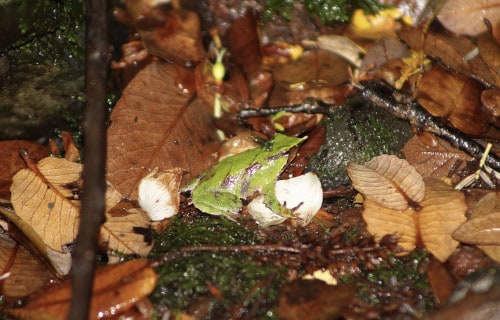
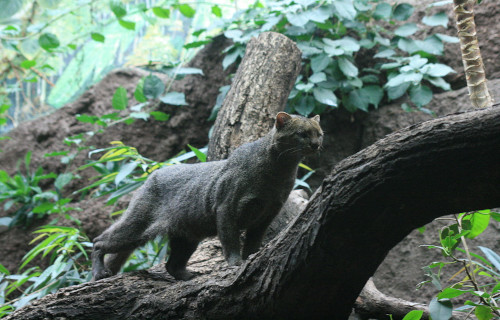
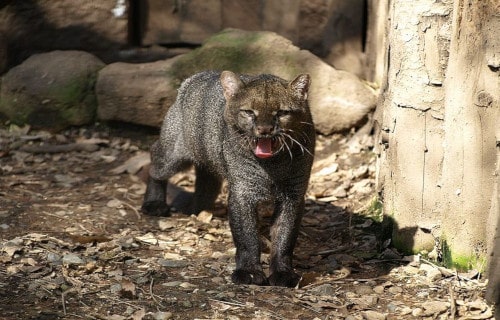
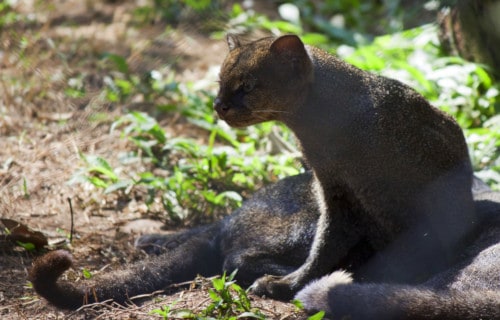

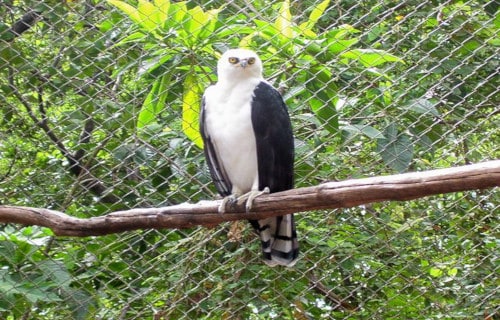
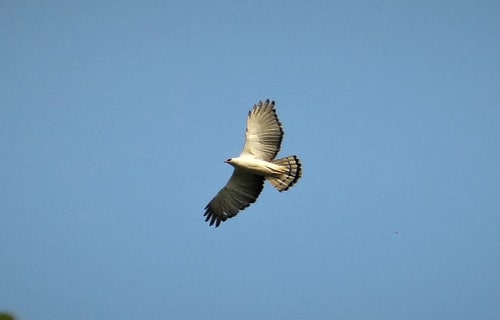
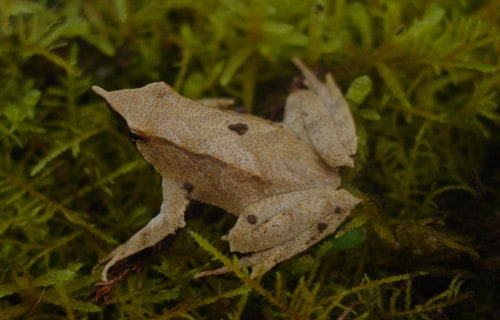
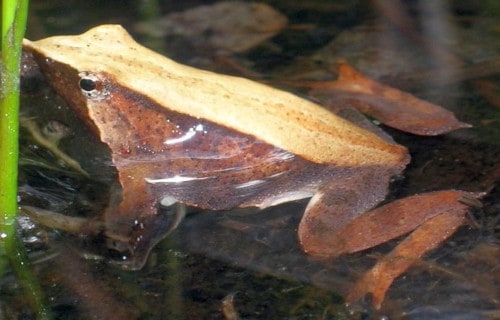
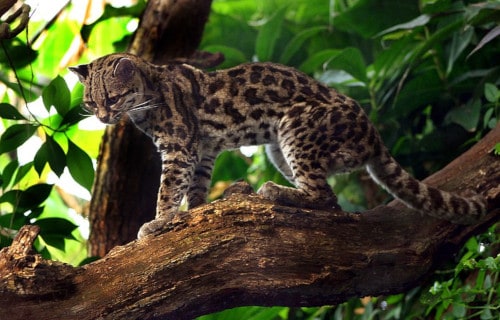
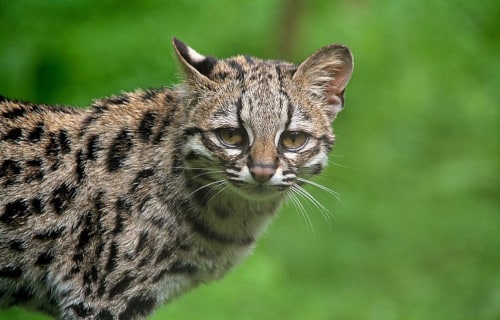
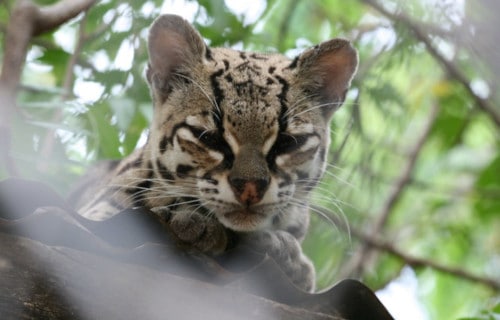
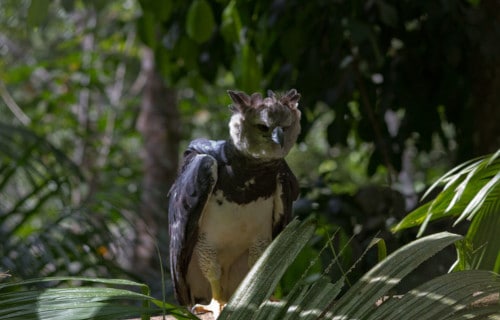
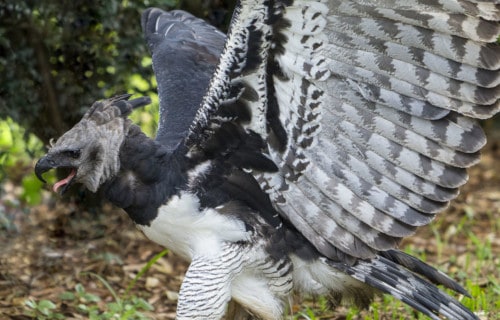
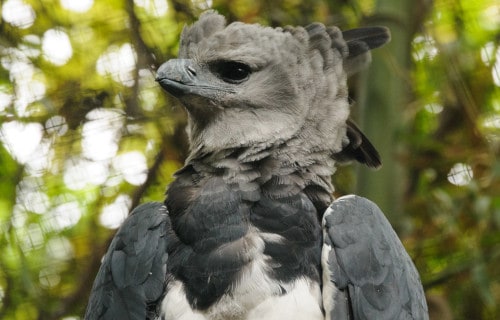









Leave a Reply